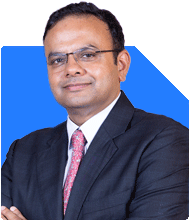Good evening sir. my name is ullas im Belgaum .i have 38 years old.my current salary is 35k per month .till now i didn't save any amount due to some family issues .so kindly guide how to invest and save the money monthly for long term purpose.
Ans: Starting at age 38 shows courage and awareness.
There is still time to build strong financial roots.
You can create a good future with steady, smart steps.
Let us look at a complete 360-degree plan for your savings and investments.
? Build the Right Money Mindset First
– You have taken the first step. That matters most.
– Saving is not about high income. It’s about habit and focus.
– Even a small start creates long-term results.
– It is never too late to begin.
– With discipline, your money will grow.
? Understand Your Monthly Cash Flow
– Track your monthly income and spending.
– Note every rupee you spend.
– Separate wants and needs.
– You will find small areas to save.
– Even Rs.2,000 saving per month is a good start.
? Build Emergency Fund as Your First Step
– Life has unexpected problems.
– Job loss, illness, or family needs may happen.
– Keep 4–6 months of expenses in emergency fund.
– Use a liquid mutual fund, not savings account.
– This fund protects your investments from breaks.
? Start SIPs With Small Amounts First
– You don’t need big money to start.
– Even Rs.1,000 SIP helps build habit.
– Use actively managed equity mutual funds.
– Avoid index funds. They are risky and passive.
– Active funds are better for long-term retail investors.
? Avoid Index Funds Going Forward
– Index funds copy the stock market.
– They don’t protect during crashes.
– They have no active manager for strategy.
– For your goals, actively managed funds are safer.
– Long-term growth is better with expert-managed funds.
? Don’t Use Direct Mutual Fund Plans
– Direct plans skip commission but miss expert advice.
– You need regular review and goal support.
– A Certified Financial Planner helps you select right funds.
– They track your portfolio, rebalance and guide you.
– Use regular plans through MFDs with CFP credential.
? Set Clear Financial Goals
– Don’t invest without a purpose.
– Fix goals like retirement, child education, house, or travel.
– Prioritise these goals. Set time for each.
– Link a separate SIP to each goal.
– This brings more discipline and motivation.
? Use Goal-Based SIPs for Long-Term Growth
– If retirement is your goal, use equity mutual funds.
– Choose multi-cap or flexicap funds.
– These give stability with growth.
– For short goals, use hybrid funds.
– Review the funds yearly with your CFP.
? Increase SIP as Income Grows
– Every year, try to raise SIP by 10%.
– Use any salary hike or bonus.
– Even Rs.500 increase makes a big difference over time.
– Compounding works best when SIP grows regularly.
? Protect Your Income With Term Insurance
– Life is uncertain. Term insurance protects your family.
– Take insurance for 15–20 times of your annual income.
– Keep this separate from investments.
– Don’t take ULIPs or LIC savings plans.
– They give poor returns and high charges.
? Avoid Investment-Cum-Insurance Policies
– Don’t mix insurance with investment.
– ULIP, endowment, or money-back plans look attractive.
– But returns are low. Lock-in is long.
– If you already hold them, surrender and switch to mutual funds.
– Keep protection and wealth building separate.
? Learn to Say No to Loans and EMIs
– Personal loans eat away your savings.
– Avoid buying on EMI if not urgent.
– Pay down debts first before investing heavily.
– Debt reduction is equal to risk-free return.
– Stay debt-free as much as possible.
? Control Lifestyle Inflation
– As income grows, spending also grows.
– Avoid this trap. Keep expenses under check.
– Set a fixed monthly saving first. Spend from the rest.
– This is called “save first, spend later” approach.
– It builds real financial freedom.
? Don’t Get Attracted to Real Estate for Investment
– Real estate is costly, slow, and hard to sell.
– Maintenance costs are high.
– Delays and legal risks also come.
– Mutual funds give better liquidity and growth.
– Stay away from land or flats as investment.
? Learn Basic Tax Saving Steps
– Use ELSS mutual fund for saving under 80C.
– It gives both tax saving and better returns.
– Don’t put money in insurance or NSC just for tax.
– SIP in ELSS is better than lump sum.
– Keep this SIP separate from your other goals.
? Invest With a Long-Term View
– Money grows best with time and patience.
– Don’t stop SIP because of market fall.
– Stay invested even in bad years.
– Let your Certified Financial Planner guide in such times.
– Long-term discipline beats short-term timing.
? Review Your Progress Every Year
– Life and goals change with time.
– Review your SIPs and goals every year.
– Adjust your investments accordingly.
– A Certified Financial Planner will guide and rebalance.
– This keeps your plan strong and on track.
? Don’t Chase Quick Returns
– Avoid hot stocks, IPOs, and crypto.
– They offer excitement, not safety.
– For wealth building, focus on steady growth.
– Mutual funds offer regulated, tested, and structured returns.
– Stay away from friends’ tips or YouTube suggestions.
? Use Growth Option, Not Dividend in Mutual Funds
– Dividend is now taxed.
– Growth option reinvests returns.
– This builds power of compounding.
– Choose growth for long-term goals.
– Keep dividend only if you need income soon.
? Prepare Mentally for Wealth Creation
– Investing is not only about money.
– It needs patience and mental discipline.
– Avoid panic in market falls.
– Don’t expect big gains quickly.
– Focus on process, not just results.
? Build a Financial Plan With a Certified Financial Planner
– Your journey will have many turns.
– Professional guidance ensures smoother path.
– CFP will guide your budget, SIP, goals, and taxes.
– You stay on track without stress.
– Don’t do guesswork. Do guided planning.
? Avoid Investing in Gold for Wealth Creation
– Gold is not a growth asset.
– It protects value, doesn’t grow much.
– Use gold only for jewellery needs.
– For building wealth, equity funds work better.
– Stay focused on long-term equity-based investing.
? Don’t Compare With Others
– Everyone has different income, expenses, and goals.
– Don’t follow others blindly.
– Build your plan based on your needs.
– Compare yourself only with past version of you.
– That’s true progress.
? Use Monthly Auto-Debit SIP
– Set auto-debit for all SIPs.
– This builds habit without failure.
– Treat SIP like monthly bill.
– You won’t forget or delay investing.
– Over years, this builds a strong corpus.
? Stay Away From Fancy Fund Categories
– Sectoral funds, thematic funds are very risky.
– Their returns are up and down.
– For long-term goals, stay with diversified equity funds.
– They give more stable growth.
– Stick to tried and tested strategies.
? Keep Financial Documents Safe and Clear
– Store all fund details in one folder.
– Share it with family.
– Note down SIP dates, policy numbers, and bank info.
– This helps during emergency or claim.
– Keep both soft copy and print.
? Finally
– Ullas, your mindset to start now is your biggest asset.
– Start with what you can save.
– Don’t wait for big income to begin.
– Focus on habit and process.
– Build emergency fund first.
– Then begin small SIPs in equity mutual funds.
– Avoid index funds, direct funds, and ULIPs.
– Use a Certified Financial Planner with MFD support.
– Review yearly, increase SIP, and stick to plan.
– With 10–15 years of discipline, you will build good wealth.
– Time, not timing, will give you success.
Best Regards,
K. Ramalingam, MBA, CFP,
Chief Financial Planner,
www.holisticinvestment.in
https://www.youtube.com/@HolisticInvestment














.jpg)













